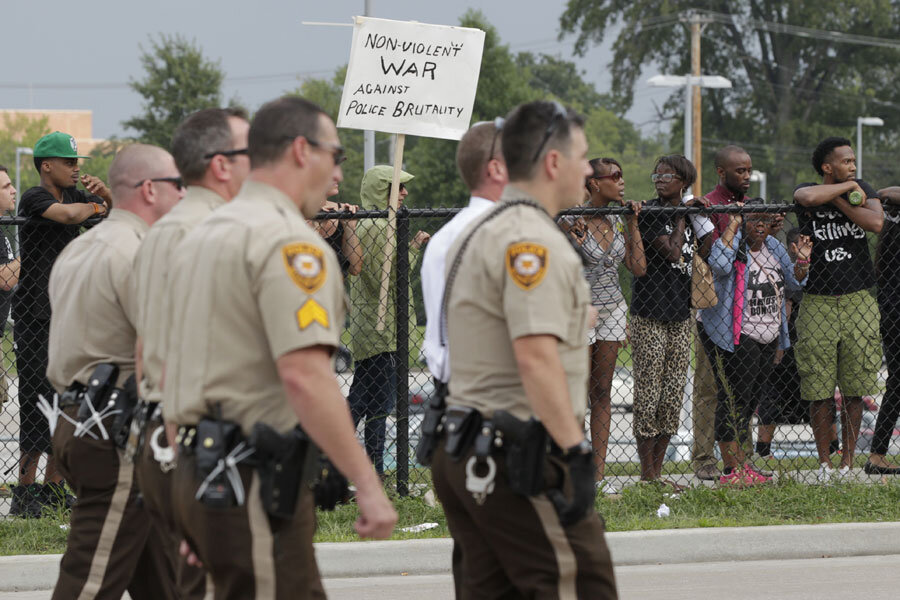Video evidence emerges in Michael Brown shooting. How important?
Loading...
A video showing the incredulous reaction of two contractors in the immediate aftermath of the Michael Brown shooting in Ferguson, Mo., on Aug. 9 could be useful evidence in the attempt to determine whether officer Darren Wilson shot at a man holding his hands up in surrender.
“He had his [expletive] hands up!” one of the contractors yells, putting his own hands up. The two men were 50 to 75 feet away from where police can be seen putting up yellow police tape shortly after the shooting.
While several witnesses have insisted Mr. Brown was no danger to the officer and had his hands up when shot and killed, another narrative has emerged from other sources that, after hitting the officer and running away, Brown turned and charged Mr. Wilson, justifying the shooting.
Some witnesses have agreed that Brown “moved” toward Wilson at one point, but whether that was an attack on the police officer or a stagger forward from getting shot is still unclear.
The shooting and a strong-arm response by police to ensuing protests sparked a national debate about race and policing. Protesters clashed, sometimes violently, with police for nearly two weeks, during which Missouri Gov. Jay Nixon declared a state of emergency to call out the National Guard.
Fueling the confusion and controversy around the shooting has been the lack of video evidence. The police car did not capture a dashboard video, and Ferguson police began wearing body cameras only after Brown’s shooting.
In that light, the new video is “good evidence,” according to CNN legal analyst Jeffrey Toobin, because it shows an immediate reaction to what happened. The account given to CNN and the St. Louis Post-Dispatch by the two contractors is also significant, legal analysts say, because neither man has any ties to the community where Brown lived. Many other witnesses knew Brown personally and either lived in the area or were visiting family.
On the other hand, the video is hardly conclusive. The two men told CNN they heard an initial shot but did not see how the confrontation started. (Police say Brown struck the officer in the face inside his patrol car, then reached for the officer’s gun.) About 30 seconds later, they said, they saw a staggering Brown turn around, put his arms up and cry, “OK, OK, OK.” The officer, they said, fired again anyway.
An autopsy has shown Brown was struck by bullets six times, including twice in the head. There may have been as many as a dozen total shots fired, according to a cellphone audio of the shooting that was aired in August.
While protests in the area have slowed down, police arrested 35 protesters trying to block a part of Interstate 70 on Wednesday. The protesters say Wilson can’t get a fair hearing from county prosecutor Bob McCulloch, who has defended police in the aftermath of Brown’s shooting, and whose own father, a police officer, was killed in the line of duty in 1964 by a black man.
At other events this week, civil rights activists standing outside Ferguson City Hall called on police to immediately arrest Wilson. And a Ferguson City Council meeting Tuesday night was packed with people demanding justice.
Governor Nixon has refused calls to replace Mr. McCulloch with a different prosecutor. A grand jury has been hearing evidence for weeks. That secret jury will determine whether there’s “probable cause” to arrest Wilson; if it does, another jury would have to determine that Wilson committed a crime beyond a reasonable doubt.






